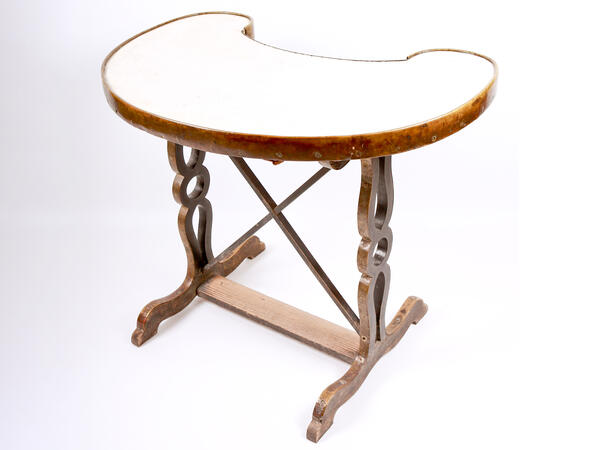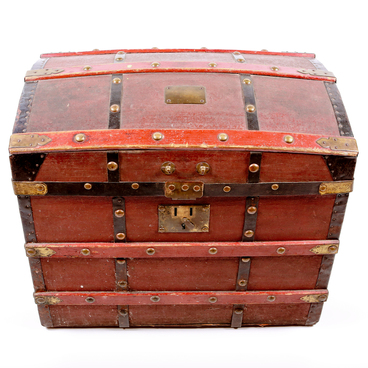Before the Russian revolution, there were noble estates in the vicinity of Kasimov that belonged to the Golytsins and the Olenins. After 1917, all the estates were nationalized, and furniture, household items and any other art treasures were given to the museum.
Thanks to the authentic items, the academic researchers of the Kasimov Museum-Reserve were able to recreate the interiors of noble estates of the 18th — 19th centuries. You can find a layout of different rooms at the exhibition: an aristocratic living room, a study and a boudoir. Including the furniture, which was taken from noble estates, there was a tiny table with an unusual marble top — it was called a ‘bean table’.
There were many tables in the interiors of noble estates. They were gaming tables in living rooms, desks — in studies, small working bean tables — in boudoirs. It took its name from the shape of the top — a bean grain.
Researchers suggest that such furniture items began to be produced in England and France. There was a similar model with the top in the form of a kidney. In English it was called a kidneytable, in French — tableá larognon, having the same meaning. In Russia ‘kidney’ turned into a ‘bean’.
Bean tables came into fashion in the middle of the 18th century. The Rococo style was extremely popular in that time: small furniture with round shapes was greatly appreciated. People used to work, write letters and drink coffee at bean tables. They were light but stable; they could be easily moved to the window or sofa. Such comfortable bean tables were everywhere: in boudoirs, nurseries, living rooms, hallways and studies.
Bean tables were used not only by landowners and nobles, but also by Catherine II herself. According to the official secretary of Catherine II Adrian Gribovsky, ‘at 10:00 the Empress went to the bedroom and sat on the chair (not armchair), which was upholstered with white damask, in front of the curved table next to another one facing in the opposite direction for the speaker and a chair.’
Thanks to the authentic items, the academic researchers of the Kasimov Museum-Reserve were able to recreate the interiors of noble estates of the 18th — 19th centuries. You can find a layout of different rooms at the exhibition: an aristocratic living room, a study and a boudoir. Including the furniture, which was taken from noble estates, there was a tiny table with an unusual marble top — it was called a ‘bean table’.
There were many tables in the interiors of noble estates. They were gaming tables in living rooms, desks — in studies, small working bean tables — in boudoirs. It took its name from the shape of the top — a bean grain.
Researchers suggest that such furniture items began to be produced in England and France. There was a similar model with the top in the form of a kidney. In English it was called a kidneytable, in French — tableá larognon, having the same meaning. In Russia ‘kidney’ turned into a ‘bean’.
Bean tables came into fashion in the middle of the 18th century. The Rococo style was extremely popular in that time: small furniture with round shapes was greatly appreciated. People used to work, write letters and drink coffee at bean tables. They were light but stable; they could be easily moved to the window or sofa. Such comfortable bean tables were everywhere: in boudoirs, nurseries, living rooms, hallways and studies.
Bean tables were used not only by landowners and nobles, but also by Catherine II herself. According to the official secretary of Catherine II Adrian Gribovsky, ‘at 10:00 the Empress went to the bedroom and sat on the chair (not armchair), which was upholstered with white damask, in front of the curved table next to another one facing in the opposite direction for the speaker and a chair.’


